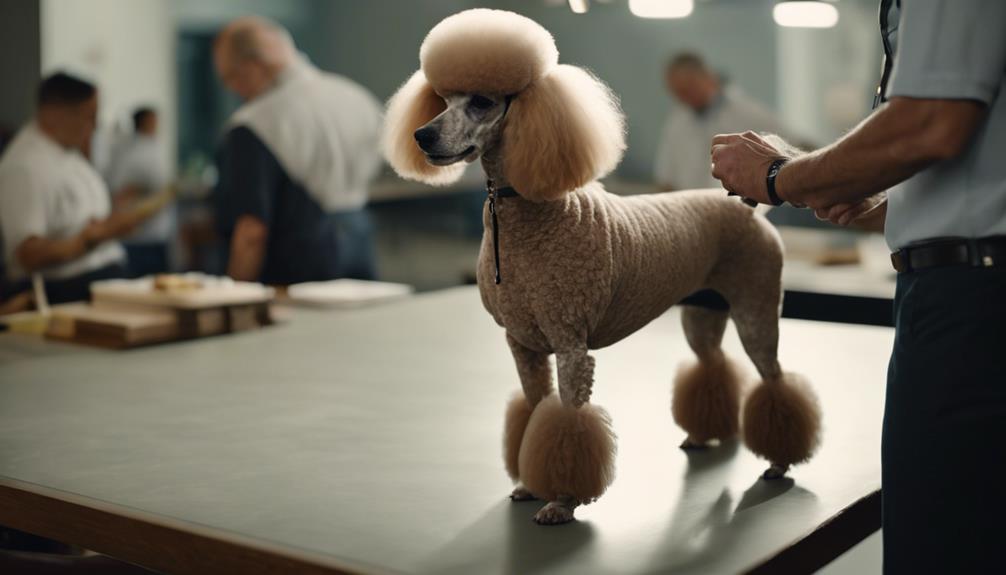As a Poodle judge, you observe a Standard Poodle entering the show ring. The dog stands tall and elegant, with a proud demeanor that catches your attention. But what specific details are you looking for beyond the initial impression? Understanding the intricacies of Poodle show standards and the fine distinctions that make a champion can unravel the mystery behind what judges seek in these regal competitors.
Key Takeaways
- Judges look for balanced conformation, correct coat colors, and patterns.
- Movement assessment considers smooth gait, agility, and coordination.
- Temperament assessment values confidence, friendliness, and breed-specific traits.
- Attention to details like head shape, eyes, grooming, and attitude in Poodles.
Poodle Show Standards Overview
Poodle show standards, encompassing specific guidelines for Standard, Miniature, and Toy varieties, serve as the benchmark for evaluating these elegant dogs in competitions. When judges assess Poodles, they carefully consider various factors outlined in the breed standard. The coat color, texture, and pattern are scrutinized to ensure they meet the specified criteria. Additionally, details such as head shape, eyes, ear set, and tail carriage play a significant role in determining a Poodle’s adherence to show standards.
Moreover, judges pay close attention to the gait and movement of the Poodle. A graceful and effortless gait is indicative of proper conformation to the breed standard. These aspects collectively contribute to the overall evaluation of the Poodle in show competitions. Additionally, the temperament and attitude displayed by the Poodle are also taken into account during judging. By adhering to these show standards, judges can ensure a fair and accurate assessment of these remarkable dogs.
Conformation Evaluation Criteria
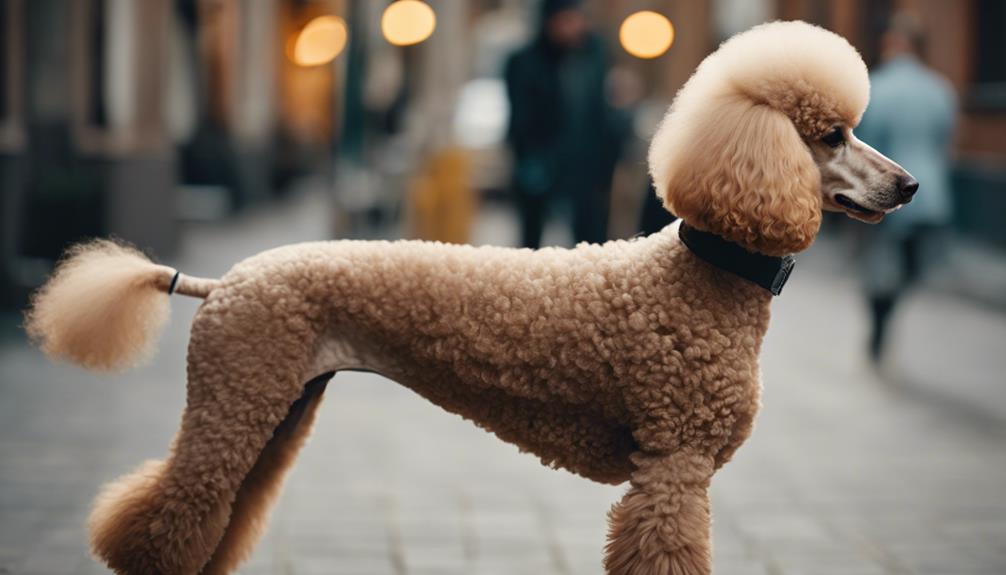
In assessing the conformation of Poodles, judges meticulously evaluate a range of physical attributes and characteristics to determine adherence to breed standards. When judging a Poodle in a conformation evaluation, judges pay close attention to various criteria such as balance, weight, size, eyes, ears, head shape, muzzle, teeth, and tail. They meticulously assess the shoulders, legs, coat, color, and conduct a hands-on inspection of bones and muscles. Gait and attitude also play a crucial role in the evaluation process, with specific requirements varying based on the breed. Show dogs are carefully scrutinized to ensure they align with the standards set by the American Kennel Club (AKC) and their respective breed clubs. Judges determine the winning show dogs by evaluating how well they conform to the breed standards during the conformation assessment.
| Conformation Evaluation Criteria | |
|---|---|
| Balance | Eyes, ears |
| Weight | Head shape, muzzle |
| Size | Teeth, tail |
Coat and Color Requirements
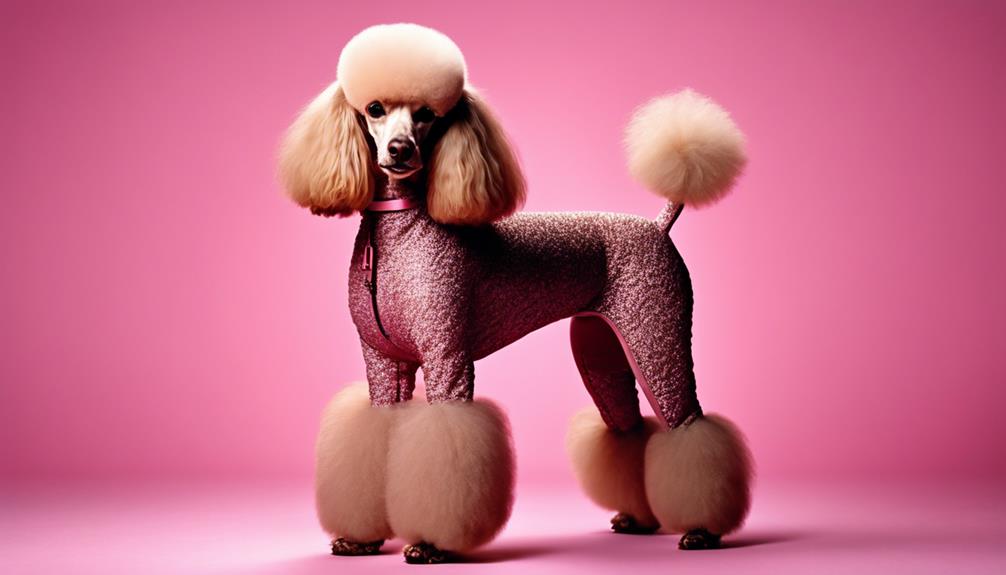
When analyzing Poodles in conformation evaluations, judges carefully assess various physical characteristics such as coat texture and color to ensure alignment with breed standards. The Poodle show standards mandate a dense, curly coat that forms a single layer and doesn’t shed, showcasing the breed’s unique hypoallergenic qualities. Accepted coat colors for Poodles in show competitions range from solid choices like black, white, blue, silver, to softer hues like apricot. Parti-colored Poodles, featuring a combination of white with another solid color, also make a striking appearance in show rings. Judges pay close attention to coat texture, looking for the characteristic curls that define the breed, as well as color clarity and pattern conformity to distinguish exceptional specimens. Proper grooming and presentation of the coat are crucial in highlighting the Poodle’s elegance and style, elevating their overall appearance in the eyes of discerning judges.
Gait and Movement Assessment
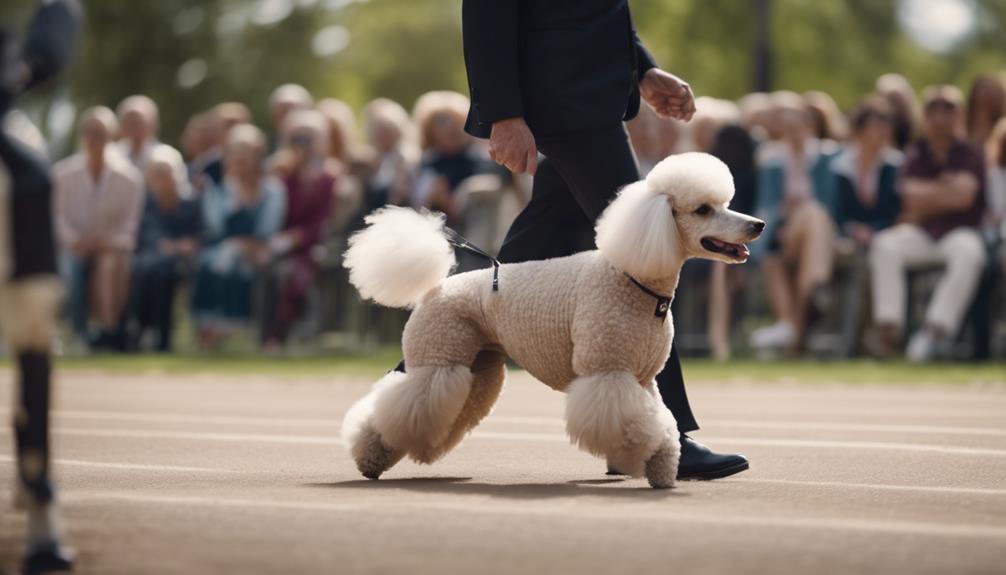
Assessing a Poodle’s gait in show evaluations involves observing for smoothness, balance, and efficiency in movement. Judges carefully assess how the Poodle moves around the show ring, looking for a gait that demonstrates reach and drive with a free-flowing and effortless stride. It is crucial that the Poodle showcases agility, grace, and overall coordination in its movement. Judges seek a steady, ground-covering gait that reflects the breed’s elegance and athleticism. The way the Poodle moves is a significant factor in evaluating its ability to navigate the show ring with purpose and fluidity. A well-executed gait not only captures the attention of the judges but also highlights the Poodle’s physical capabilities and conformation. In the competitive world of Poodle shows, a strong and graceful gait can make a lasting impression and set a Poodle apart from the rest.
Judging Temperament and Behavior
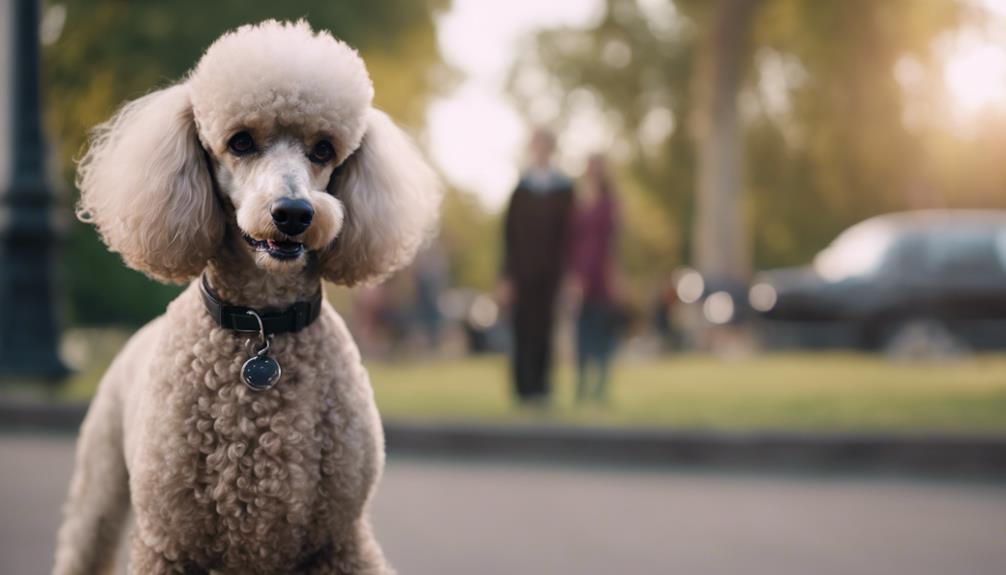
Evaluating show dogs’ temperament requires judges to keenly observe and assess breed-specific characteristics such as confidence, alertness, and friendliness. When judging dogs in the ring, it’s crucial for judges to have a clear mental image of the breed’s standard temperament. Different breeds have unique purposes and histories, reflected in their behavior expectations. For instance, herding breeds should display attentiveness and readiness, while guarding breeds may demonstrate a more reserved but watchful demeanor. Judges focus on how well dogs embody the qualities that allow for proper function within their breed’s role. A well-behaved and composed disposition is highly valued, showcasing the dog’s ability to handle the show environment with grace. The temperament evaluation is not just about obedience but about how the dog’s behavior aligns with the breed’s intended characteristics. Dogs that are responsive, alert, and exhibit the desired breed traits stand out in the eyes of judges seeking to uphold breed-specific requirements.
Frequently Asked Questions
What Do Judges Look for in Show Dogs?
In show dogs, judges look for coat texture, tail carriage, ear shape, movement fluidity, eye expression, and overall balance. These factors play a crucial role in determining the winning dog that best represents the breed standards.
How Do They Judge Best in Show?
When judging Best in Show, gait analysis, coat texture, tail carriage, head shape, muscle tone, and temperament are key. Observing these traits ensures the dog embodies breed standards, ultimately determining the deserving winner of the prestigious title.
Why Do Judges Look at Dogs Teeth in Dog Shows?
When judges inspect dogs’ teeth at shows, they evaluate dental health, bite alignment, tooth structure, gum color, tartar build-up, and oral hygiene. A dog’s teeth indicate breeding quality, genetics, and overall conformation. It’s a crucial aspect of assessment.
What Makes a Good Show Dog?
What truly sets a show dog apart? Is it the way they carry themselves, their coat’s sheen, or the way they move with grace? A good show dog embodies breed standards, excels in temperament, and commands the ring with confidence.
Conclusion
As the judge carefully assesses each Poodle in the show ring, they are like skilled artists painting a masterpiece, capturing the essence of the breed in every stroke. Their discerning eye and expert knowledge ensure that only the best exemplars of Poodle standards are crowned winners. Through their meticulous evaluation process, they truly bring out the beauty and grace of these magnificent dogs, leaving spectators in awe of the perfect blend of form and function.
